MESSIEURS DELMOTTE
Messieurs Delmotte positions himself somewhere between reality and imagination, between genius and dilettantism. Distinguishing himself through a formal dress code, poker face expression and meticulously combed hair, Delmotte presents himself as a dashing character (a double) that surprises his audience with – unpredictable and absurd – gestural discoveries. And yet such gaiety and nonsensical behavior betray an existential and poetic revolt. Delmotte engages himself in a hilarious and heroic battle dealing with objects, humans or animals alike. In so doing, he undermines ‘the rules of the game’.
Messieurs Delmotte is far from a newcomer to the art world. His video productions, photographs and installations have been shown in solo and group exhibitions throughout the world and of course Belgium, where he is also well known for his mixed media parties. The deadpan, Buster Keaton-like mystery artist poses as a real dandy: he is irresistibly charming and as elusive as ether. His dedication gives way to what he cannot suppress. His actions are so blatantly topical, so banally urgent they can’t be postponed. They have to take place, then and there. He translates his unbridled naughtiness, his love of danger and way of sneering at the institutionalised art world into singular actions that result in a one-part narrative image. Coarse and crude, his videos make a mockery of just about everything. They stand aloof from smooth perfection and are produced with the simplest of audio-visual means and a unity of time, place and action. Mimicking the world of animals and objects, Delmotte is a great pretender whose whimsical feats need no explanation--they’re just absurdly cheerful and dogged. He repeats his actions on several occasions, so that one can see slight variations of him walking in fountains, putting buckets of water on his head or chasing cows. He’s at his best when interacting with trees, butting heads with them or climbing a stepladder and leaping into them. The results are straightforward and rude but also pure and even poetic; Messieurs Delmotte’s videos are absurd one-acters.
In 1998 he gave a video-sequence the generic title of Flying Chickens. This title was then reused for a video-installation at Argos (“Rather a pretext for contextualizing than for conceptualising the work into the framework of an exhibition”, according to Messieurs Delmotte). At Argos, Flying Chickens consisted of 15 monitors but it could just as well have been made up of 152: the screens were just a set-up for showing a certain obsession – or rather, a ceaseless fixation. Many artists have been inspired by the air, the fall or the jump in the creation of their individual myth. Monsieur Delmotte falls too – falling into a pond after setting his backside on fire or falling as a result of having sawn off the legs of a chair on which he was sitting, and the list continues, for he falls more than his fair share, falling in pirouettes, falling stupidly, falling philosophically above all, tumbling, sliding, tripping, somersaulting and jumping into the void. “Where the fall”, Jean-Yves Jouannais wrote about Delmotte, “cannot be given its abstract meaning of disgrace (in politics) or devaluation (in economics), but essentially must be seen as an epic capitulation beyond the united resistance of the will”, the idiotic fall is orchestrated to have the body lie down on the road, and remain lying down while projectiles whistle overhead, and jumping to the side enables one to continue fighting the fear of saying “no”.
Delmotte devotes himself to substitution ‘re-creation’, as with the numerous prosaic images which he has already transfigured. His works are not self-portraits and even less so transpositions of the designer in one or several fictitious character(s). They can merely be described as dissolved identities of an artist, as sort of rejections or absences of subject. Home made movies like the compilation Ce qui est Fait le Mal est Fait (‘What’s Done Evil’s Done’) present an aesthetic with no object, considering the work of art simply as a passage, a transitory form transporting our way of looking at behaviour, ways of production, and relationship to the world. The spirit goes ahead of the body, establishing connections, picking up clues even before we have a chance to examine the exhibit close-up. Between reality and fiction, the one is possibly within the other; perhaps it is one and the same thing that is exploding into a multitude of fragments, dispersing until they disappear. There is an extremely fine line between the prompted scenario and the real sequence of an act. What would happen if you were to go into your neighbours’ house without their permission, in order to kiss them on the mouth, and ended up really doing it? As Monsieur Delmotte states: “I do it, I do not know why, but I do it !”
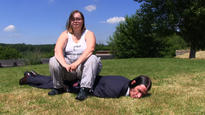
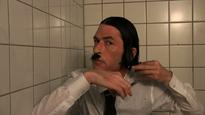
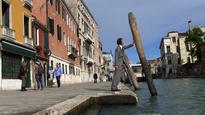
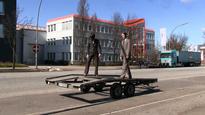

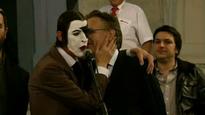
- ° 1967 Liège (Belgium). Lives and works in Brussels.
-
EVENTS
- argos open lounge
- Short Turns: Messieurs Delmotte, Peter Finnemore, Kuang-Yu Tsui
- Closing Event & Summer Drinks: Exhibitions Wendy Morris & 'Pies in the skies'
- Out of Balance - Videoarti Belgiidan (Tblisi Istoriis Muzeumi - Karvasla (GEORGIA))
- Le jour le plus court / What a Day !
- Monsieur Delmotte - Flying Chickens
- Deframing - Ideological spaces and artistic strategies of mental dissent
- Anger and Beyond
- Argos @ the Internationale Kurzfilmtage Oberhausen
- Les Rencontres internationales Paris-Berlin-Madrid / Madrid
- Video Library
- Messieurs Delmotte and his Jukebox Recorded Orchestra - Mono Fucks Dolby Surround
- Ciclo Vídeo Belga
- Sweet Protestations – Performing Reality in Public Space
- Art(s)kills - Argos @ Espace Ladda
- Wunderground
- Figures of the Body @ VideoZone 2006
- Argos Media Library
- FFWD / RWD
- Videoex 2011: Guestcity Brussels
- Vidéo-art, une experience à vivre, à partager...
- Real to Reel
- A world of objects
- Pies in the Skies
- Zona de mestizaje - Cine y Vídeo de Artistas Belgas
- Figures of the body @ LAZNIA
- Azerbaijan State Academy of Fine Arts 2005
- Strolling Around
- Refractions of the tourist's eye: Three alternative Takes for the Audio Visual Travel Journal
- Argos @ Mobile Institute, Brussels
- STEP UP! Belgian Dance and Performance on Camera 1970-2000 - Chapter 3
-
At view in the media library
WORKS- 2 Feet for 2 Balls
- A Cup of Coffee's State of Being
- Alive Skin
- Alone Love
- Aluminium Rabbits
- Anus Song
- Appearance
- Ass Dance
- Autoreverse Chair
- Balloon
- Balloon from Inside
- Balloon Man
- Bike
- Bizarre Fir
- Brokendown dream
- Buckethead
- Bunch of Flowers
- Canal
- Century of the 20th Sex
- Chocolate Face
- Cindy Crawford
- Confettis Foetus Man
- Confettis Man
- Container
- Cows
- Dance around Nude
- Dance of the Cigarette
- Defect Chair
- DJ reverse
- Double Mental Reason
- Double Mirror Face
- Double Rap Scratch
- Double Urban Dance
- Eiderdown
- Enclosure
- Extinguishers
- Facts and Gestures Vol. 1
- Facts and Gestures Vol. 2
- Fakir Neck-Tie
- Fancy Flags Walk
- Fireworks
- Fir Tree
- Flabby Cat
- Flying Chickens [part]
- Flying Chickens [serial]
- Flying Pigeon
- Fountain
- Fox : Natural Size
- Francophones
- FränZ ünd KoFöN [part]
- FränZ ünd KoFöN [serial]
- From Beyond
- Frontal Tree
- Gallic Pork-Butchery
- Gentlemen Troubles
- Hacking Public Space
- Head Trying to Enter in a Body
- Head with the Cats
- Human Traffic Light
- Innerside the Bulls
- Jumpy Chicken
- Jumpy Fish
- Jumpy Rabbit
- Landscape Man
- L'Artiste qui disait : Merci !
- Le Clou
- Madam Fellatio
- Me and My Amen
- Melt Umbrella
- Mental Architecture
- Meteor Hand
- Mirror Ball
- Missed Cloning
- Molten Ball
- Mouth and Red Chickens
- Naturally Rabbit
- Neither “IN” Neither “OFF” (In Between Venice and Biennale)
- Newspapers Man
- Non Stop Design
- Nothing !
- On Sculptures
- Open Country
- Out Off
- Papa Maman
- Parking
- Plumage
- Portemanteau
- Race Wool
- Real to real photography
- Rejected videos
- Reversed Garden
- Scissors
- Shooting of Fire
- Silver Balls
- Simple X-Dog
- Sleeping Highway
- Sleeping Pornography
- Small Bells
- Smiley 3D Water
- Smoke-Producing
- Snuff Coq
- Something Like That !
- Steps Backwards
- Teddy Dog Mother
- That's the way it is
- The Appels
- The Beers
- The Bench
- The Big Tire
- The Boat
- The Breeches (1)
- The Breeches (2)
- The Bridge (2)
- The Cars
- The Doll
- The Dungs
- The Fuck
- The Garden
- The Jacket
- The Jacket (Pigeons 2)
- The Ladder 1
- The Ladder 2 (Alone)
- The Leaves
- The Logic Jacket
- The Maggots
- The Mental Reason Vol. 1
- The Muscle and its Revetment
- The Myself Schema
- The Need to take back what you've just given (Pigeons 1)
- The Peebles
- The Rabbit
- The Roses
- The Sickness
- The Simple Fact of Not Being a Woman (1)
- The Simple Fact of Not Being a Woman (2)
- The Stones
- The Swans
- The Tree
- The Unceasing Desire
- THE UNDERDEVELOPED MAN
- The Vases
- Tiger Skin
- To Float
- Tourist Renouncement
- Traffic Light
- Treets Appearances
- Turkey
- Turn Around
- Umbrella [part of Facts and Gestures Vol. 1]
- UNCERTAIN MENTAL IDENTY(IES)
- Under the Cars
- Underwater
- UNDO / REDO
- UNDO / REDO Vol. 2
- Unidentified Air
- Unidentified Emoticon
- Urban Landscape
- Urinal and Bread
- Vegetables Are Vegetables
- Ventriloquist Bird
- VERSUS & VERSUS
- Wax Candles
- We Were Made for Loving you, Babies ! You Were Made for Loving Us !
- What's Done, Evil's Done
- Windy Appearance
- With or Without Clothes [part of Facts and Gestures Vol. 2]
- Without Appearances (vol. 1)
- Yeah, in the bathroom
- Yellow Flowers